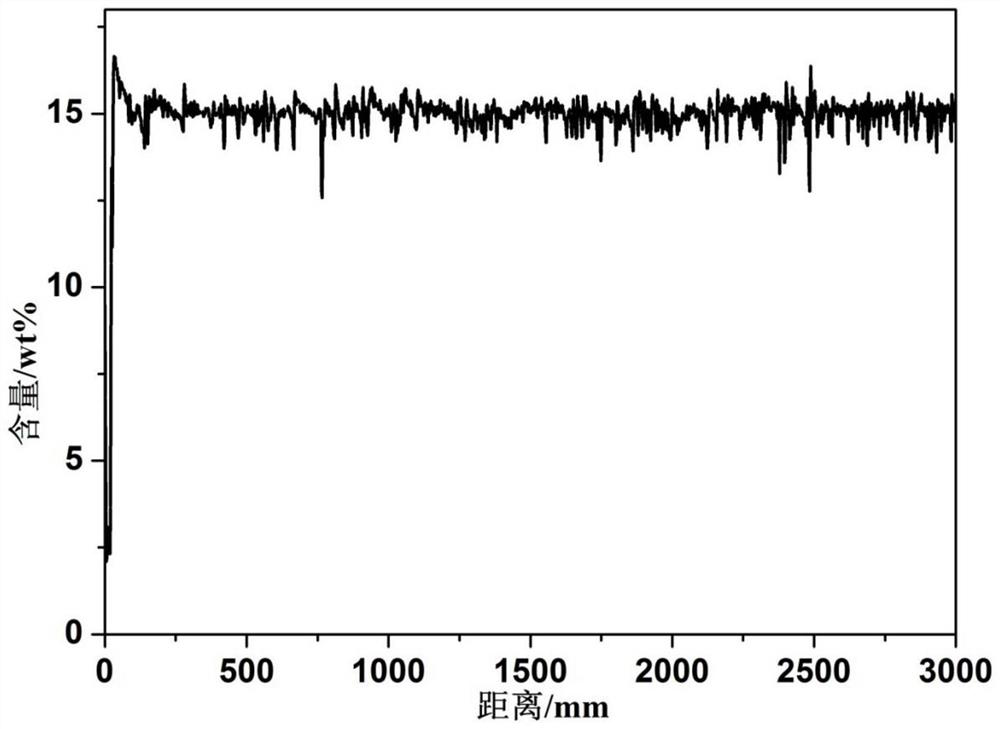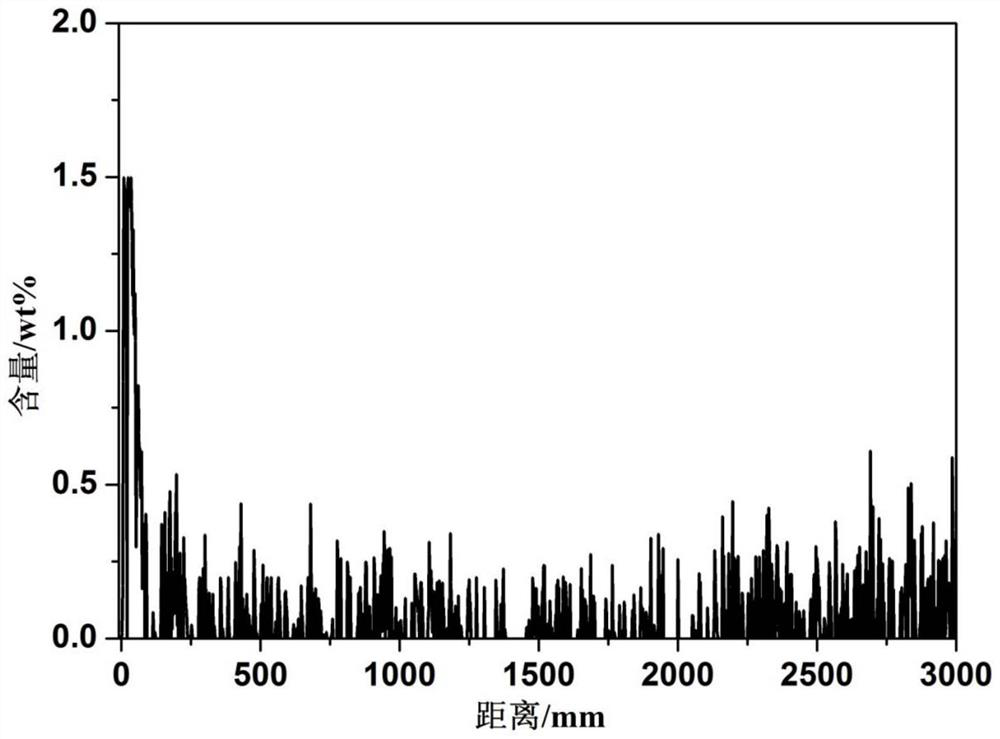Method for removing peak interference of electronic probe line analysis and application of method
An electronic probe and distribution map technology, which is applied to the use of wave/particle radiation for material analysis, material analysis, and measurement devices, can solve problems such as inaccurate N element distribution results, reduce environmental pollution, and achieve accurate detection results. Effect
- Summary
- Abstract
- Description
- Claims
- Application Information
AI Technical Summary
Problems solved by technology
Method used
Image
Examples
Embodiment 1
[0022] A method for removing interference from electron probe line analysis peaks, comprising:
[0023] (1) The selected material is a sample that has been nitrided on a titanium alloy.
[0024] (2) Grinding and polishing the sample, according to the metallographic grinding and polishing steps, sequentially select 180#-800#-1200#-1500#-2000# sandpaper for polishing, and then finely polish with 1 μm diamond suspension to reach Electron probe analysis requirements.
[0025] (3) Put the sample into the electronic probe sample chamber, wait until the vacuum value reaches 1.0×10 -3 At Pa, select the accelerating voltage as 10kV, the probe beam current as 100nA, the beam spot diameter as 1μm, the step diameter as 2μm, and the line analysis length as 3mm to determine the area to be measured. element and Ti element, until the end of the scan, the line distribution diagram of the N element obtained by scanning is as follows figure 1 shown.
[0026] (4) According to the formula show...
PUM
 Login to View More
Login to View More Abstract
Description
Claims
Application Information
 Login to View More
Login to View More - R&D
- Intellectual Property
- Life Sciences
- Materials
- Tech Scout
- Unparalleled Data Quality
- Higher Quality Content
- 60% Fewer Hallucinations
Browse by: Latest US Patents, China's latest patents, Technical Efficacy Thesaurus, Application Domain, Technology Topic, Popular Technical Reports.
© 2025 PatSnap. All rights reserved.Legal|Privacy policy|Modern Slavery Act Transparency Statement|Sitemap|About US| Contact US: help@patsnap.com


